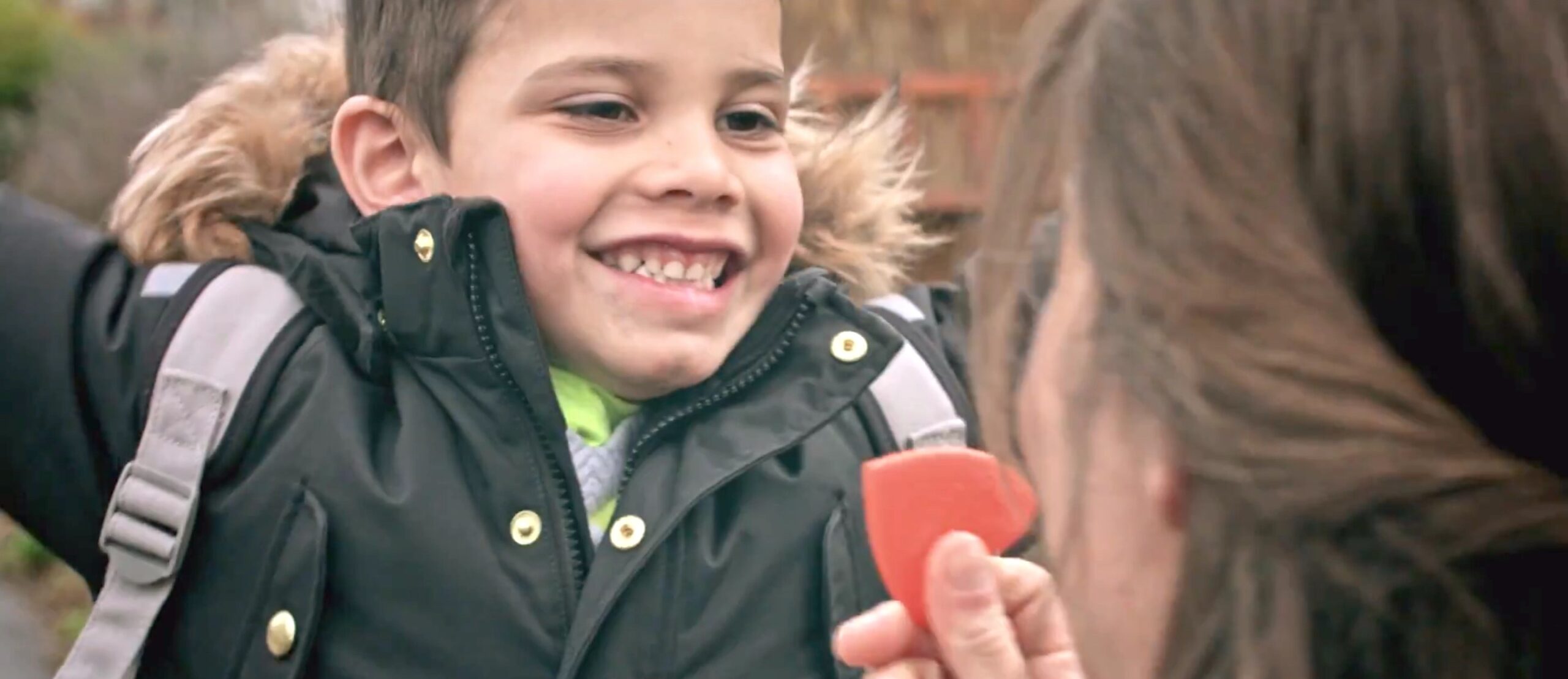
The Dial Up and Dial Down Model
“The better I self-regulate as a parent, the better my child will self-regulate. The better my child self-regulates, the less stress I feel.”
– DR. STUART SHANKER
You have probably noticed that some children are sensitive to the slightest noise, while others require a very loud noise to respond. Some children can do errands with you all day and not get cranky, while others get fussy and need some quiet time after a short outing. If you want your child to thrive…
Your interactions with your child play an important role in her future capacity to self-regulate. Whenever you calm your own anxiety, control your anger, manage powerful emotions, or delay gratification, you are regulating your internal states. Modeling how you regulate your own emotions or behavior in various situations helps your child learn to do the…
Developing your child’s ability to self-regulate requires you to observe her closely and respond appropriately. From birth, you help your child regulate her fluctuating arousal states. We call this simple self-regulation model Dial Up and Dial Down. • Dial Down: When you rock your fussy child in a quiet room before bed, you are helping…
Emotion Regulation • Sixteen-month-old Jack is at the doctor’s office for his checkup and is afraid of getting a shot. His mother, Estee, wants to help him lower his anxiety (Dial Down). • Estee acknowledges and validates Jack’s fear by saying in a comforting voice, but with a long frown on her face, “I know…
Porges, S. W. (2011). The polyvagal theory: Neurophysiological foundations of emotions, attachment, communication, and self- regulation. New York, NY: W. W. Nortion and Company. Rothbart, M. K. & Rueda, M. R. (2005). The developmentof effortful control. In U. Mayr, E. Awh, & S. Keele (Eds.), Developing individuality in the human brain: A tribute to Michael…
| Cookie | Duration | Description |
|---|---|---|
| __stripe_mid | 1 year | Stripe sets this cookie cookie to process payments. |
| __stripe_sid | 30 minutes | Stripe sets this cookie cookie to process payments. |
| cookielawinfo-checkbox-advertisement | 1 year | Set by the GDPR Cookie Consent plugin, this cookie is used to record the user consent for the cookies in the "Advertisement" category . |
| cookielawinfo-checkbox-analytics | 11 months | This cookie is set by GDPR Cookie Consent plugin. The cookie is used to store the user consent for the cookies in the category "Analytics". |
| cookielawinfo-checkbox-functional | 11 months | The cookie is set by GDPR cookie consent to record the user consent for the cookies in the category "Functional". |
| cookielawinfo-checkbox-necessary | 11 months | This cookie is set by GDPR Cookie Consent plugin. The cookies is used to store the user consent for the cookies in the category "Necessary". |
| cookielawinfo-checkbox-others | 11 months | This cookie is set by GDPR Cookie Consent plugin. The cookie is used to store the user consent for the cookies in the category "Other. |
| cookielawinfo-checkbox-performance | 11 months | This cookie is set by GDPR Cookie Consent plugin. The cookie is used to store the user consent for the cookies in the category "Performance". |
| CookieLawInfoConsent | 1 year | Records the default button state of the corresponding category & the status of CCPA. It works only in coordination with the primary cookie. |
| elementor | never | This cookie is used by the website's WordPress theme. It allows the website owner to implement or change the website's content in real-time. |
| viewed_cookie_policy | 11 months | The cookie is set by the GDPR Cookie Consent plugin and is used to store whether or not user has consented to the use of cookies. It does not store any personal data. |
| Cookie | Duration | Description |
|---|---|---|
| mailchimp_landing_site | 1 month | The cookie is set by MailChimp to record which page the user first visited. |
| Cookie | Duration | Description |
|---|---|---|
| _ga | 2 years | The _ga cookie, installed by Google Analytics, calculates visitor, session and campaign data and also keeps track of site usage for the site's analytics report. The cookie stores information anonymously and assigns a randomly generated number to recognize unique visitors. |
| _gat_gtag_UA_46801669_2 | 1 minute | Set by Google to distinguish users. |
| _gid | 1 day | Installed by Google Analytics, _gid cookie stores information on how visitors use a website, while also creating an analytics report of the website's performance. Some of the data that are collected include the number of visitors, their source, and the pages they visit anonymously. |
| tk_lr | 1 year | The tk_lr is a referral cookie set by the JetPack plugin on sites using WooCommerce, which analyzes referrer behaviour for Jetpack. |
| tk_or | 5 years | The tk_or is a referral cookie set by the JetPack plugin on sites using WooCommerce, which analyzes referrer behaviour for Jetpack. |
| tk_r3d | 3 days | JetPack installs this cookie to collect internal metrics for user activity and in turn improve user experience. |
| tk_tc | session | JetPack sets this cookie to record details on how user's use the website. |
| Cookie | Duration | Description |
|---|---|---|
| cookies.js | session | No description available. |
| m | 2 years | No description available. |
This content is exclusive to CuddleBright® customers.
Experience CuddleBright® today!
Already a customer? Login to view.